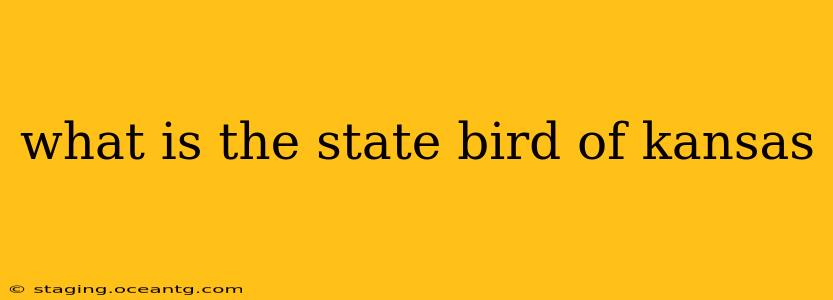The state bird of Kansas is the Western Meadowlark (Sturnella neglecta). This cheerful, vibrant bird was officially adopted as the state bird on February 27, 1925. Its selection wasn't arbitrary; the Western Meadowlark's presence across the Kansas landscape, its distinctive song, and its overall beauty made it a fitting representative of the state's natural heritage.
Why was the Western Meadowlark Chosen?
The Western Meadowlark's widespread presence throughout Kansas played a significant role in its selection. These birds are common inhabitants of grasslands, prairies, and even agricultural fields, reflecting the diverse landscapes of Kansas. They are relatively easy to spot and hear, their bright yellow breast and melodic song making them familiar to many Kansans. The bird's cheerful disposition also likely contributed to its popularity as a potential state symbol.
What does the Western Meadowlark look like?
The Western Meadowlark boasts a striking appearance. Its upper parts are primarily brown, providing excellent camouflage in its natural habitat. However, its bright yellow breast, sharply contrasted by a distinctive black V-shaped marking, makes it easily identifiable. Males and females exhibit similar plumage, although males tend to have a slightly richer yellow coloration.
What is the Western Meadowlark's song like?
The Western Meadowlark is renowned for its beautiful and complex song, often described as a cheerful, bubbling melody. This clear, flute-like song is typically heard during the breeding season, serving as a territorial marker and attracting mates. The song is so unique that it's easily distinguishable from other bird species, adding to its appeal as a state symbol.
What other birds are commonly found in Kansas?
Kansas boasts a diverse avian population, thanks to its varied habitats. Besides the Western Meadowlark, several other bird species are prevalent, including:
- Northern Cardinal: A vibrant red bird, easily recognizable by its crest.
- American Robin: A familiar bird found across North America, known for its reddish-brown breast.
- Eastern Bluebird: A small, blue bird often seen perched on fence posts.
- Great Horned Owl: A large owl with prominent ear tufts.
These are just a few examples; Kansas supports a rich biodiversity of birdlife, reflecting the state's ecological diversity.
How can I help protect the Western Meadowlark and other Kansas birds?
Protecting Kansas' avian population requires collective effort. We can all contribute by:
- Conserving grasslands and prairies: These habitats are crucial for the Western Meadowlark and many other bird species.
- Supporting responsible land management practices: Minimizing pesticide use and promoting sustainable agriculture are crucial for bird conservation.
- Educating ourselves and others about birds and their habitats: Learning more about the challenges facing birds helps in developing effective conservation strategies.
- Supporting organizations dedicated to bird conservation: Many organizations work tirelessly to protect birds and their habitats. Volunteering or donating can make a significant impact.
By appreciating and protecting the Western Meadowlark and other avian inhabitants of Kansas, we ensure the future of this valuable natural resource. The Western Meadowlark's status as the state bird serves as a reminder of the importance of biodiversity and the need for responsible environmental stewardship.
